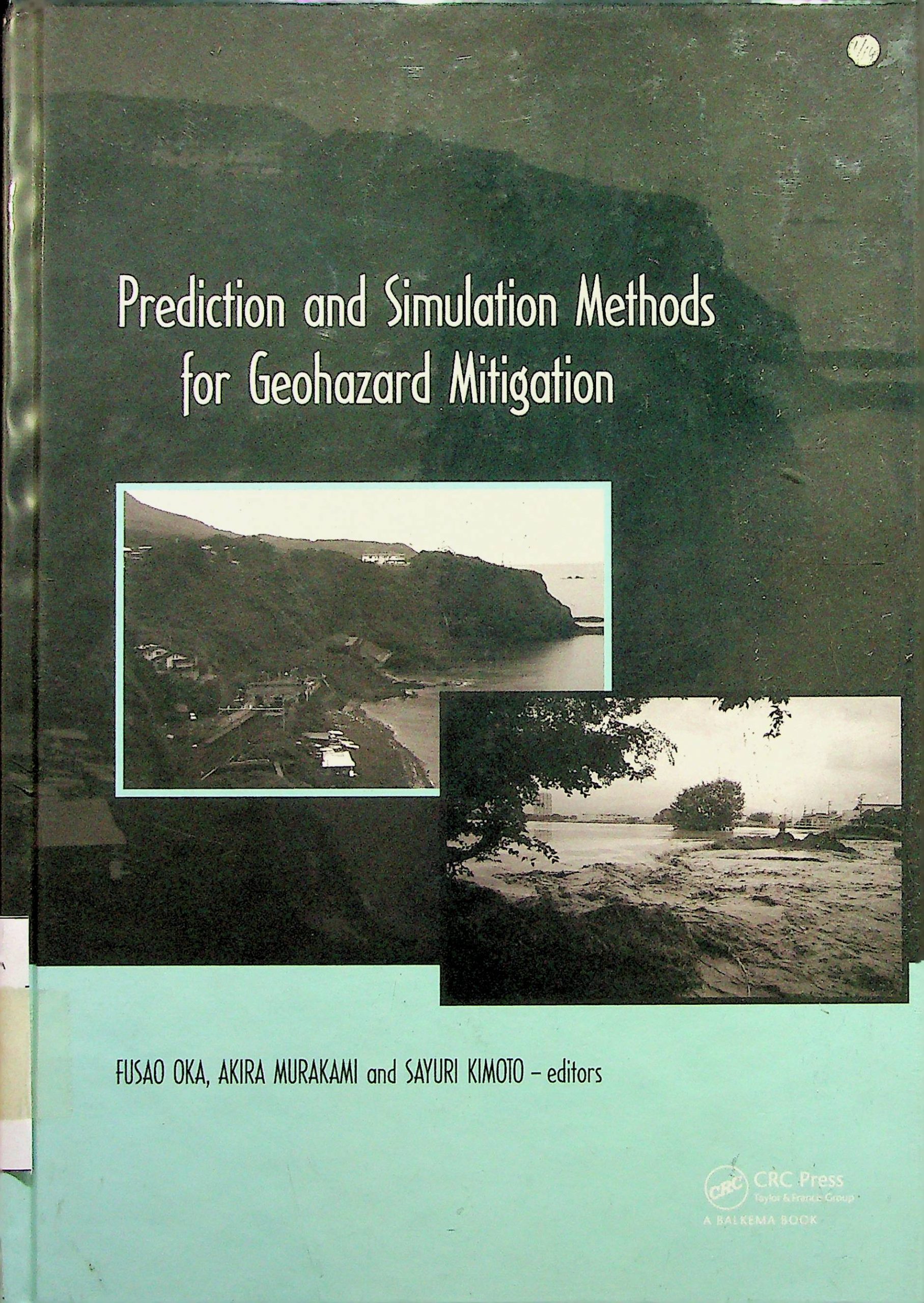The mitigation of geohazards is an important problem in geotechnical engineering. Heavy rains, typhoons and earthquakes are the main causes of geohazards. Due to changes in climate and extreme weather, geohazards are found all over the world. The Kansai branch of the Japanese Geotechnical Society (JGS) established a technical committee on the Mitigation of Geohazards in River Basins in 2006, and it has been doing site investigations on the geohazards brought about by heavy rains and typhoons. On the other hand, Technical Committee 34 (TC34) of the ISSMGE on Prediction and Simulation Methods in Geomechanics has been working on prediction and simulation methods for geoincchanics. In particular, TC34 focuses on analyzing unstable behavior of the ground, such as strain localization, which is a precursor of the failure of the ground, liquefaction, landslides, seepage failure, etc. TC34 of ISSMGE on Prediction Methods in Large Strain Geomechanics was established in 2001after the Istanbul Conference. Since then, TC34 had been successfully managed by Chairperson Professor Vardoulakis of Athens, Greece under the support of JGS, and a portion of their goals has been achieved through the promotion of exchanges among academic and practicing members. After the 16th ISSMGE in Osaka, TC34 was reestablished as Prediction and Simulation Methods in Geomechanics.Members of the Kansai branch of JGS and TC34 of ISSMGE decided to organize an international symposium on Prediction and Simulation Methods for Geohazard Mitigation. The symposium provides a forum for discussing new prediction and simulation methods for geohazards and for exchanging ideas and information on topics of mutual interest. This symposium will mark the 60th anniversary of JGS and the 50th anniversary of the Kansai branch ofJGS. The symposium is sponsored by the JGS, the Kansai branch ofthe JGS, TC34 of ISSMGE, TC34’s supporting committees of JGS and the Commemorative Organization for the Japan World Exposition(’70)The themes of prediction and simulation methods for geohazard mitigation include: 1. Mechanisms of geohazards, namely, heavy rains, floods, typhoons, earthquakes, landslides, slope and snow slides, tsunamis, land subsidence, coastal erosion, etc. 2. Numerical and analytical simulation methods for geohazards, including conventional and advanced methods, FDM, FEM, Extended FEM, DEM, SPH and MPM. 3. Advanced constitutive modeling of geomaterials and numerical implementations and constitutive parameter determination using laboratory and field test results. 4. Thermo-hydro-mechanical instabilities, namely, large deformations, strain localization, progressive failure, liquefaction, ground water flow analysis, the rapid flow of complex geofluids such as mud flow, etc. 5. Monitoring and non-destructive investigative methods for geostructures during/after floods, earthquakes, heavy rains, etc. and design methods. 6. Evaluation of existing prediction methods, performance-based design methods aided by advanced numerical modeling, risk analysis, and the management of mitigation programs. 7. Case records of geohazards and mitigation projects.A total of 89 papers on the above topics have been contributed from 18 countries. The members of the Organizing Committee and the International Advisory Committee reviewed 116 papers. The editors believe that all of the papers, presentations, and discussions during the symposium will open the door to new areas ofresearch and engineering for the mitigation of geohazards. We wish to express our sincere thanks to the authors of the contributed papers fortheir resourceful papers and to the members of the International Advisory Committee and the Organizing Committee for their valuable support and review of the manuscripts. Acknowledgements are also given to the Japanese Geotechnical Society, the Kansai branch of the Japanese Geotechnical Society, and ISSMGE.
5
Prediction and Simulation Methods for Geohazard Mitigation
Fusao Oka,Akira Murakami & Sayuri Kimoto
Penerbit :
Taylor & Francis Group, London, UK
Tahun :
2009
Buku Text
-
No Scan105
-
No Klasifikasi551.22
-
ISBN
-
ISSN
-
No Registrasi028B22015
-
Lokasi Terbit
-
Jumlah Hal28
-
Label551.22Fus p
-
Versi DigitalTIDAK
-
Versi FisikTIDAK
-
Lokasi Rak Buku Fisik//
-
Jumlah Exemplar Fisik Tersedia-






